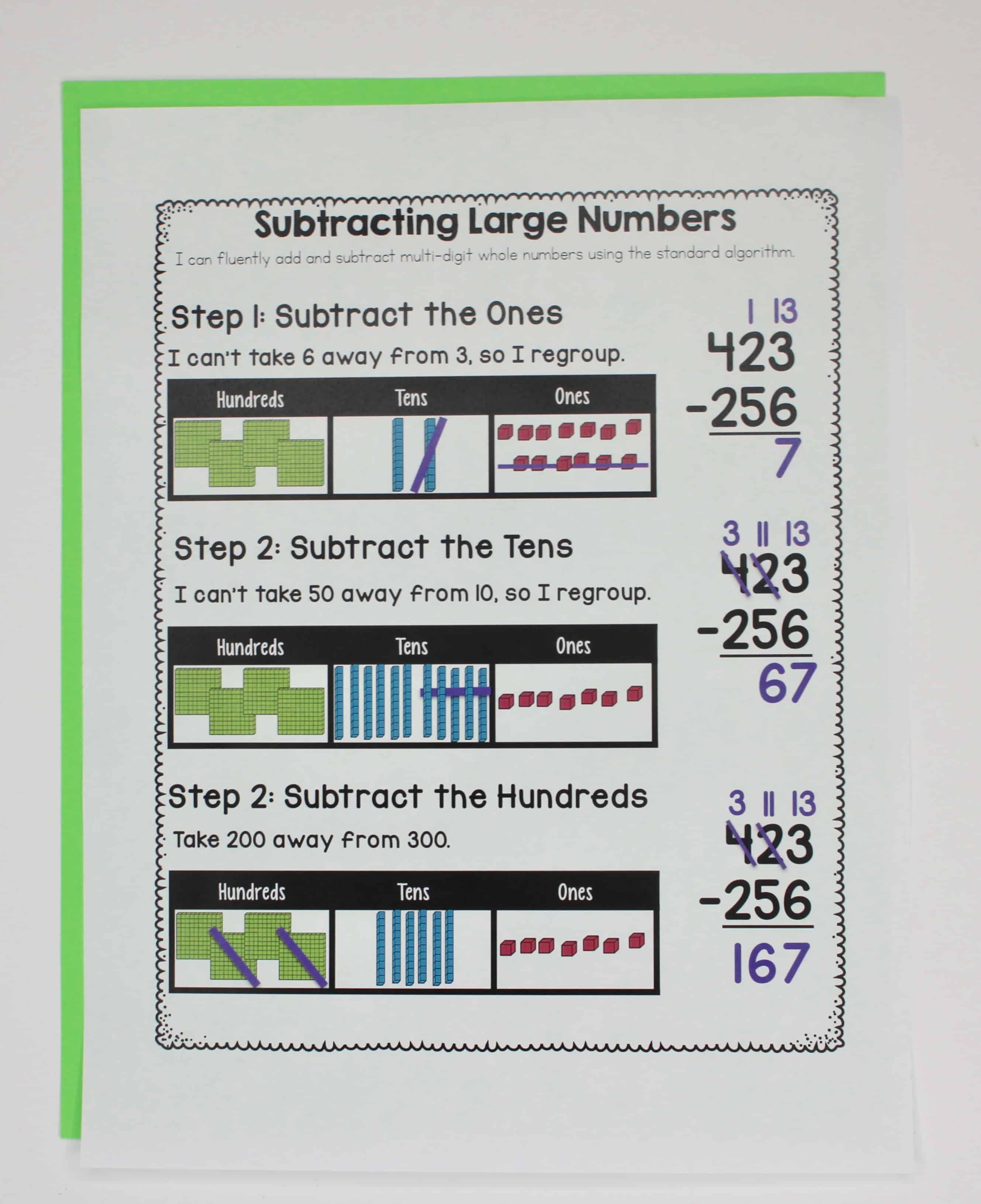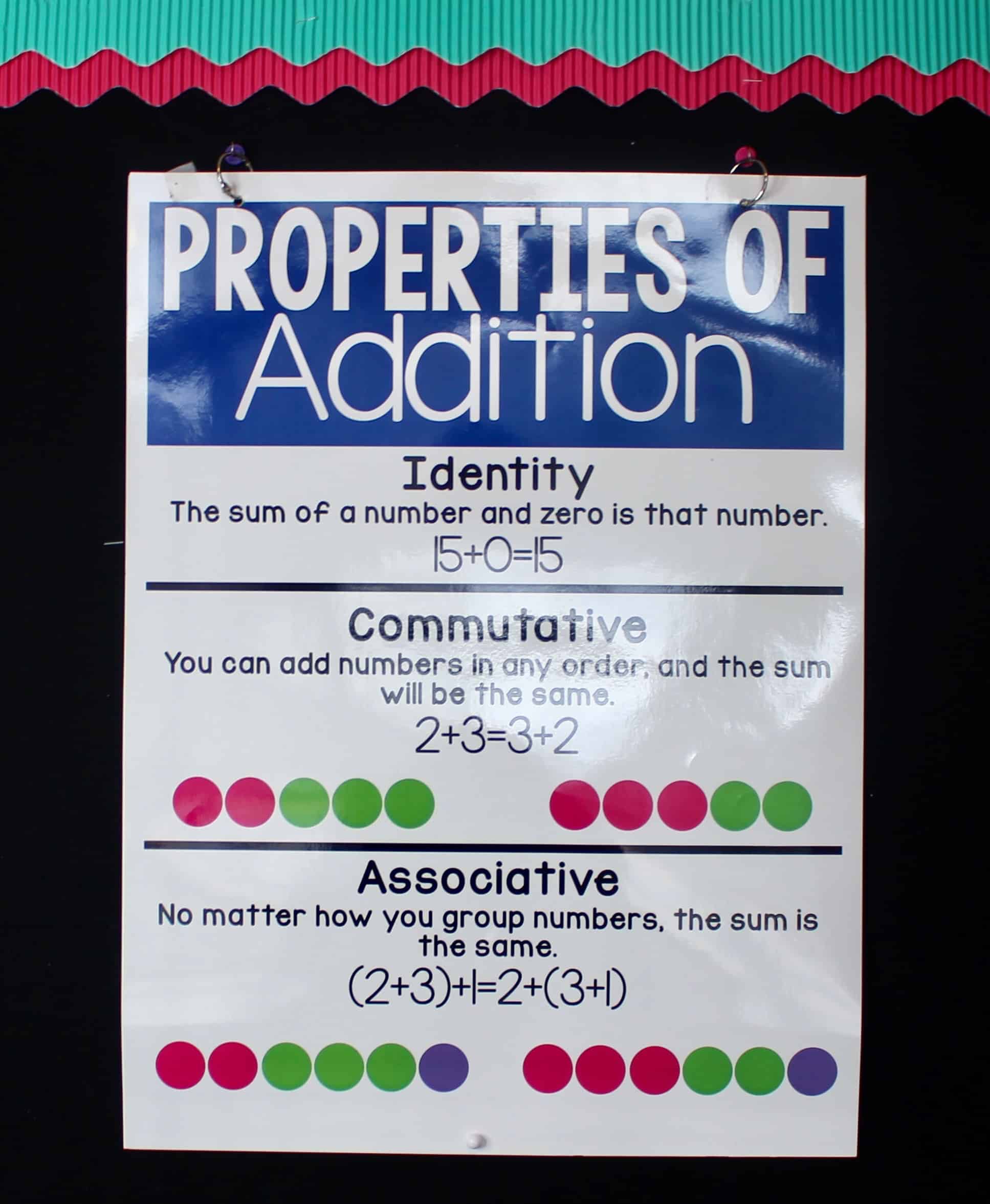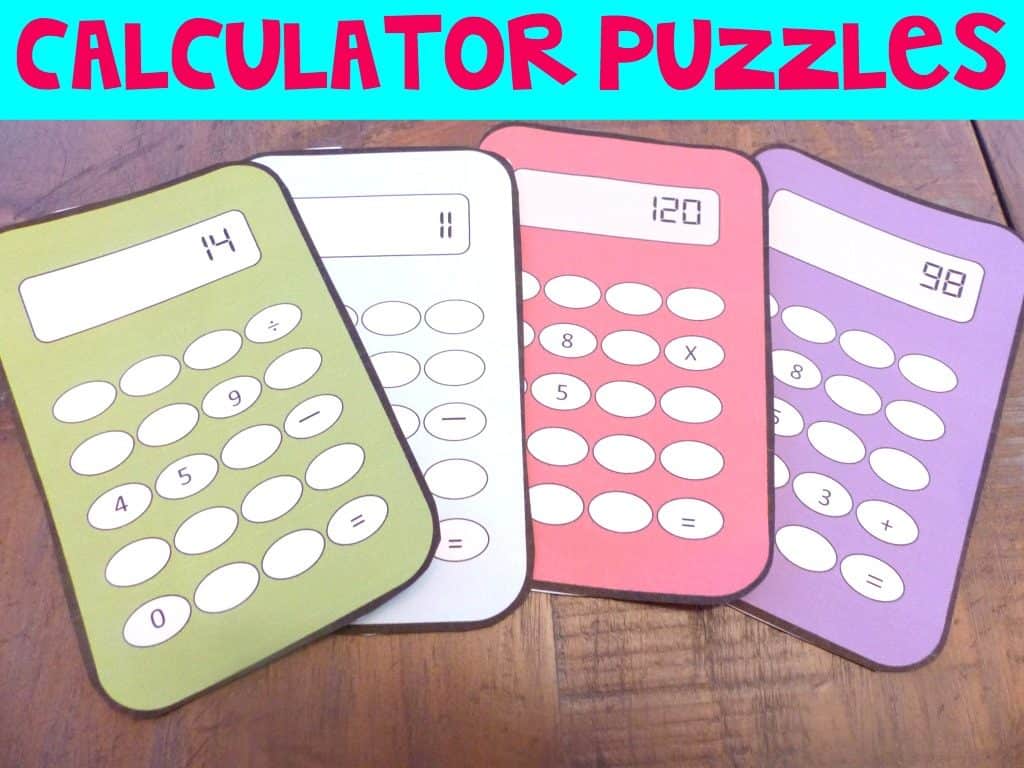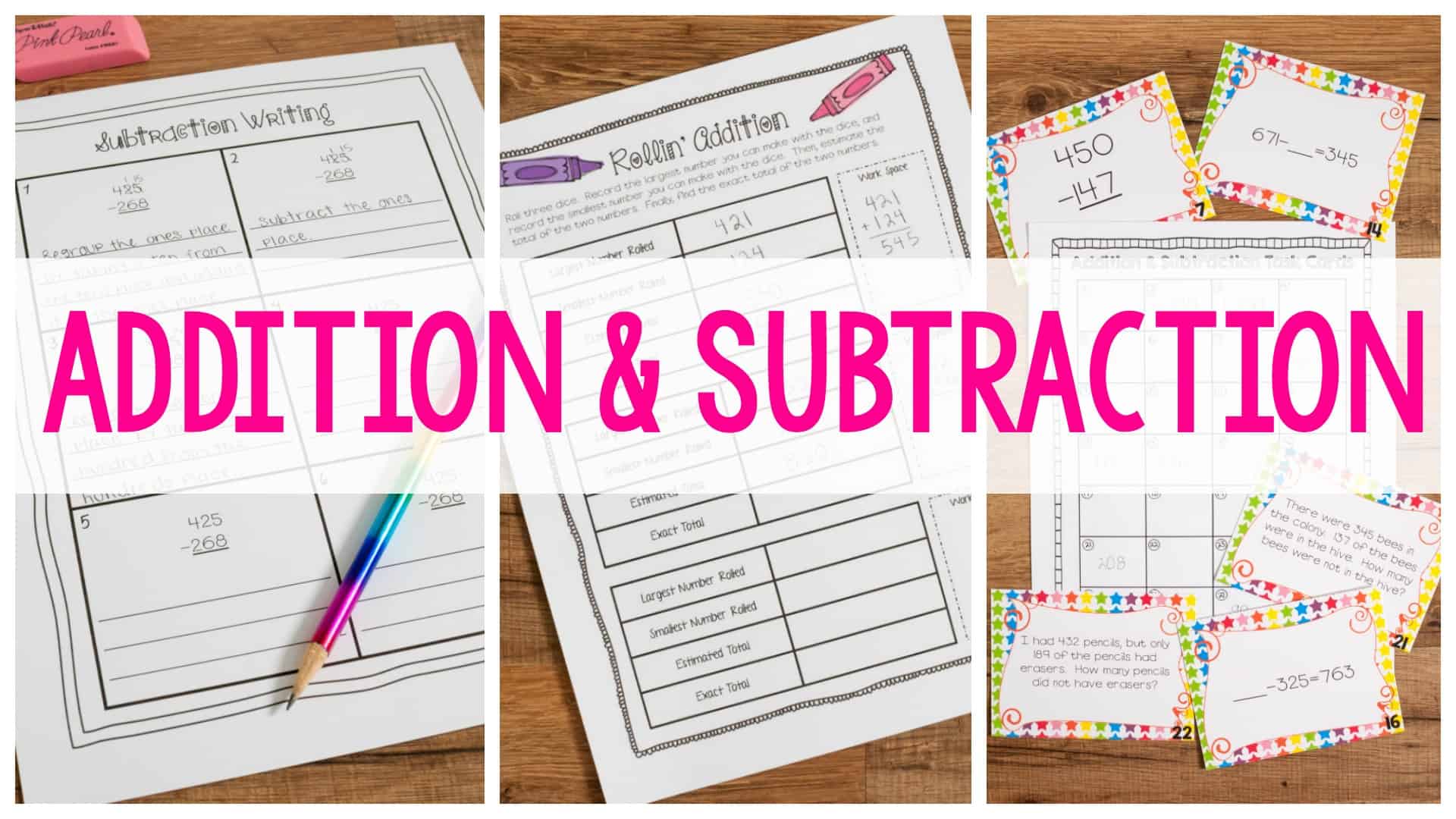
Adding and subtracting with regrouping are important concepts for third graders. Even though students have been learning about addition and subtraction since kindergarten, adding and subtracting with regrouping often gives students trouble. Part of students’ difficulty is the fact that they don’t understand the concepts of addition and subtraction. They memorize key words and algorithms without authentic understanding, and in return we see the same errors again and again.
This Third Grade Addition and Subtraction Unit helps you teach adding and subtracting with regrouping, as well as addition and subtraction word problems. If you’re looking for more advanced lessons, be sure to check out this blog post.
Addition and Subtraction Facts
Before getting into the nitty gritty of teaching adding and subtracting with regrouping, I would like to share what I don’t focus on-addition and subtraction facts. Yes, I want students to know their addition and subtraction facts, but I simply don’t have time to devote my classroom instruction to these facts. Instead, I focus on third grade content, and the vast majority of math fact practice will be with multiplication facts. My hope is that through skills practice and number talks, students will become more fluent with their addition and subtraction facts. Fortunately, the majority of my students do come to me with a basic understanding of their addition and subtraction facts. They may not all be fast, but they are efficient.
However, some students have a difficult time with addition and subtraction facts. To support these students, teach students to draw a number line on the bottom of their assignment, and have them use the number line for solving basic addition and subtraction problems. This is such a simple, yet effective, accommodation for students. They don’t redraw the number line for every problem, but reuse the same number line for all of their work. Students will become fast with the number line and build math confidence.
Addition and Subtraction Pretest
I like to begin adding and subtracting with regrouping with a brief addition and subtraction pretest. This gives a quick overview of where I need to begin the addition and subtraction unit. It’s also good information for developing math groups. I give the pretest about a week before I start my addition and subtraction unit, because I use that extra time to preteach my students who struggled the most. This helps make my grade level addition and subtraction lessons more meaningful to those students.
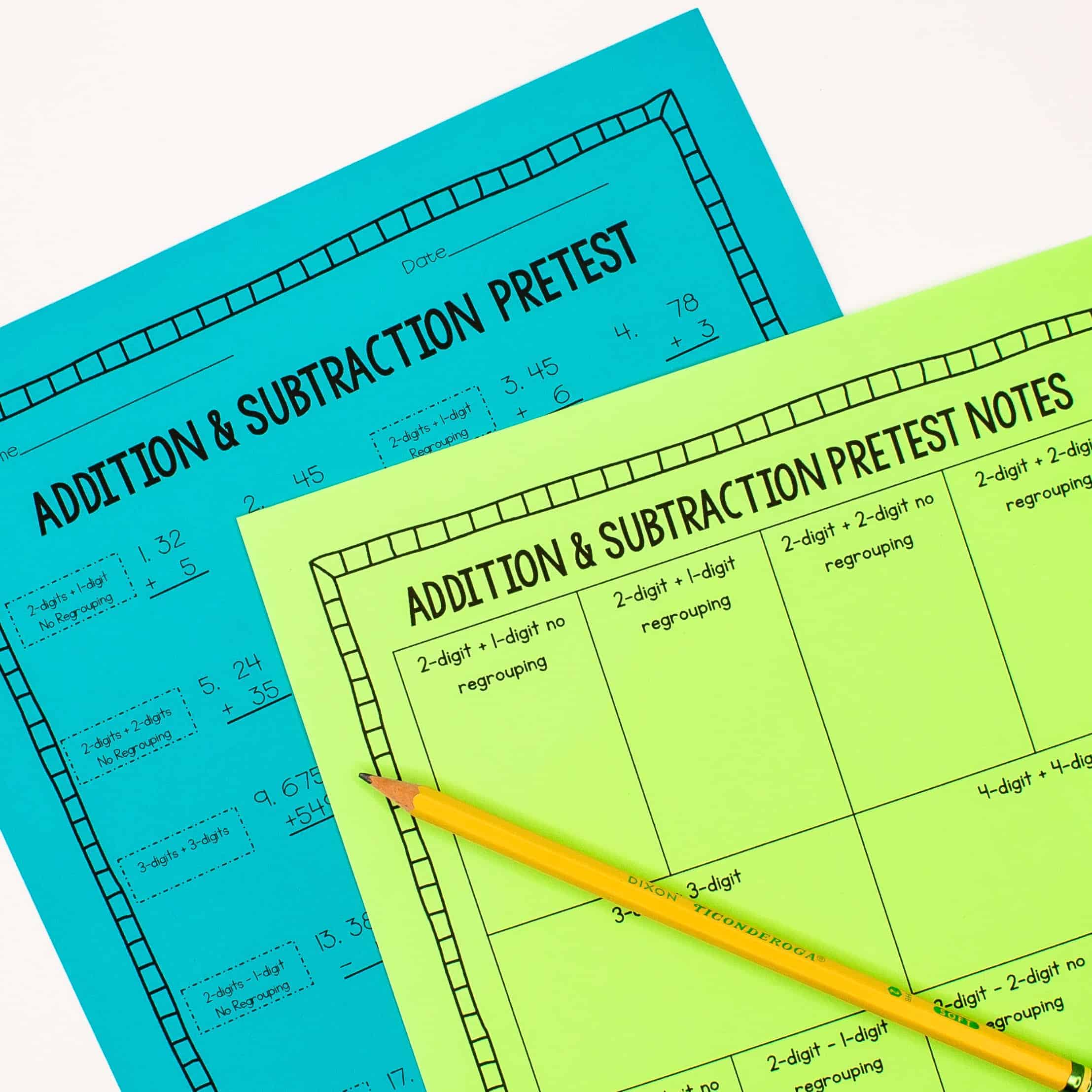
Adding and Subtracting With Regrouping
My Addition and Subtraction Unit consists of 15 lessons and activities for teaching adding and subtracting with regrouping. I begin each lesson with a whole group mini lesson. During students’ work time, students have a task that they complete, while I meet with students in need extra help in a small group. I determine my small groups based on the addition and subtraction pretest, and I use the data from my small groups to determine the following day’s small group. For instance, if on Monday I met with a group who needed to work on 2-digit plus 2-digit problems, and by the end of math I only had two students who still needed extra practice, I would begin working with those two students on Tuesday. Once they grasped the concept, I would move to all students who need help with 3-digit plus 3-digit problems.
My first week of mini lessons in the unit focus on addition strategies for larger numbers. I teach friendly numbers, doubles, place value, adding up, and the algorithm. Naturally, I don’t expect my students to fully grasp each strategy, but I use them as a general overview for my lessons to come. I want students to at least be familiar with the terms.
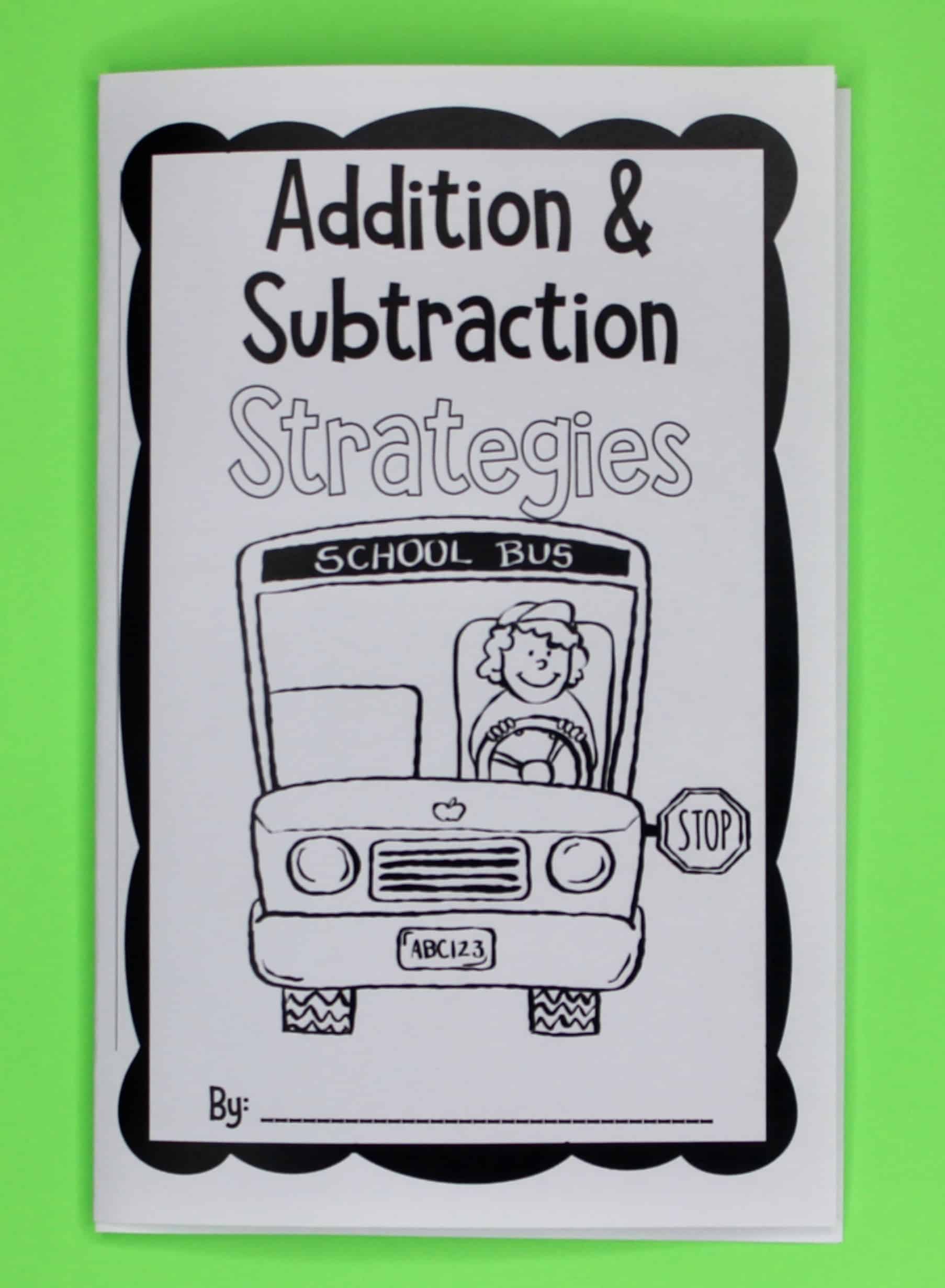
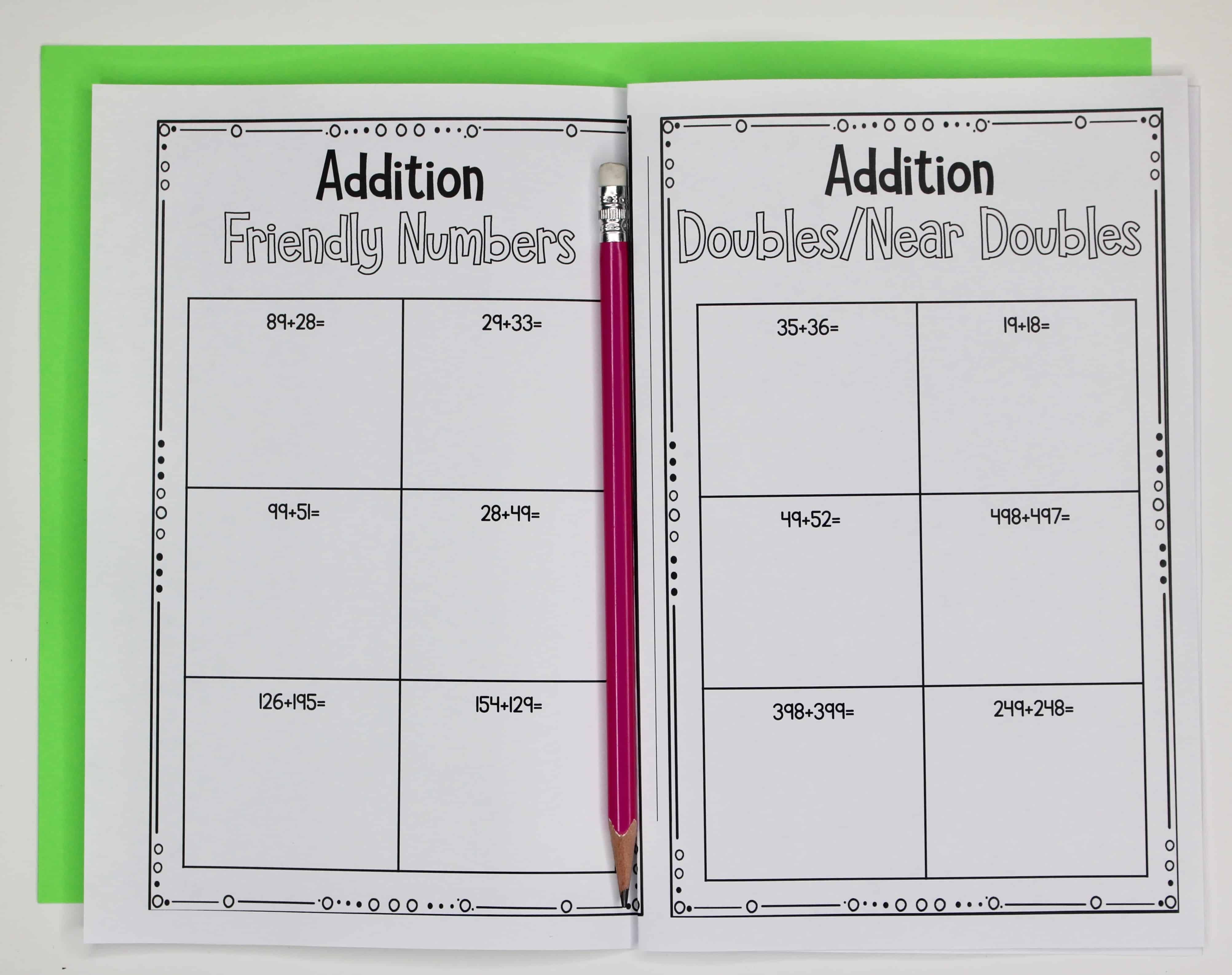
My second week of adding and subtracting with regrouping lessons in the unit focus on subtraction strategies for larger numbers. I teach adding up, removal, friendly numbers, keeping a constant difference, and the algorithm. Once again, I don’t expect students to fully grasp everything I teach, but I do want them to have a familiarity with the terms. We will be using the terms for the next several weeks in our number talks, which is where my students will develop a more thorough understanding. Since the focus of my number talks are all strategies other than the algorithm, I use my small group time for teaching the algorithm.

I tried really hard to create fun and innovative ways to practice addition and subtraction in my students’ work time. There was an emphasis on word problems, especially two-step word problems, because this is always what gives students the most trouble. You’ll find activities for the properties of addition and finding the missing number in addition and subtraction number sentences.
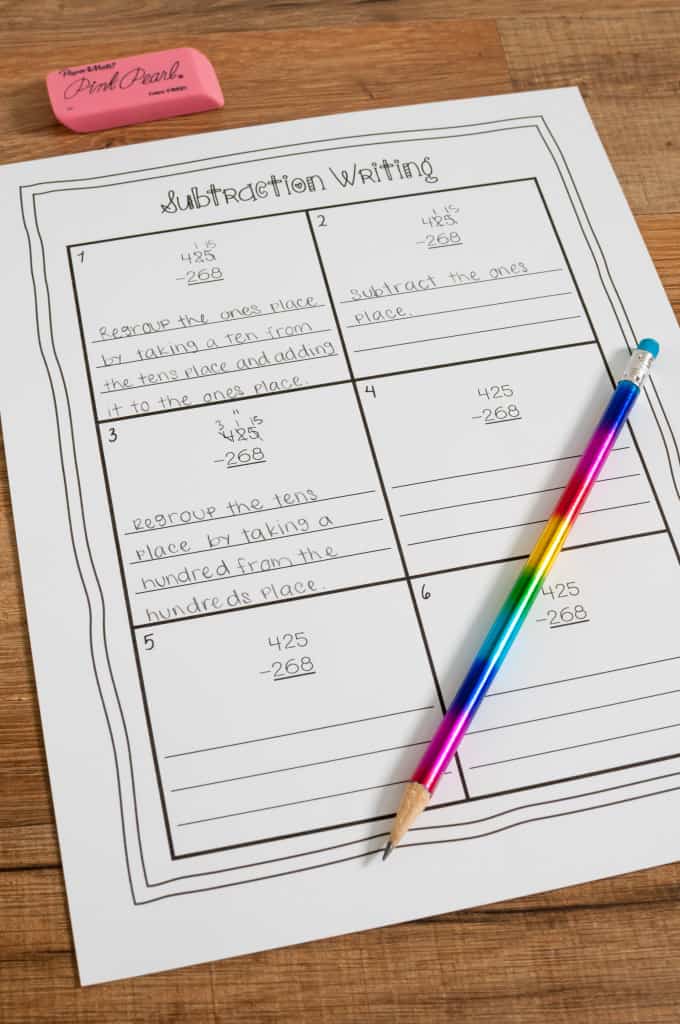
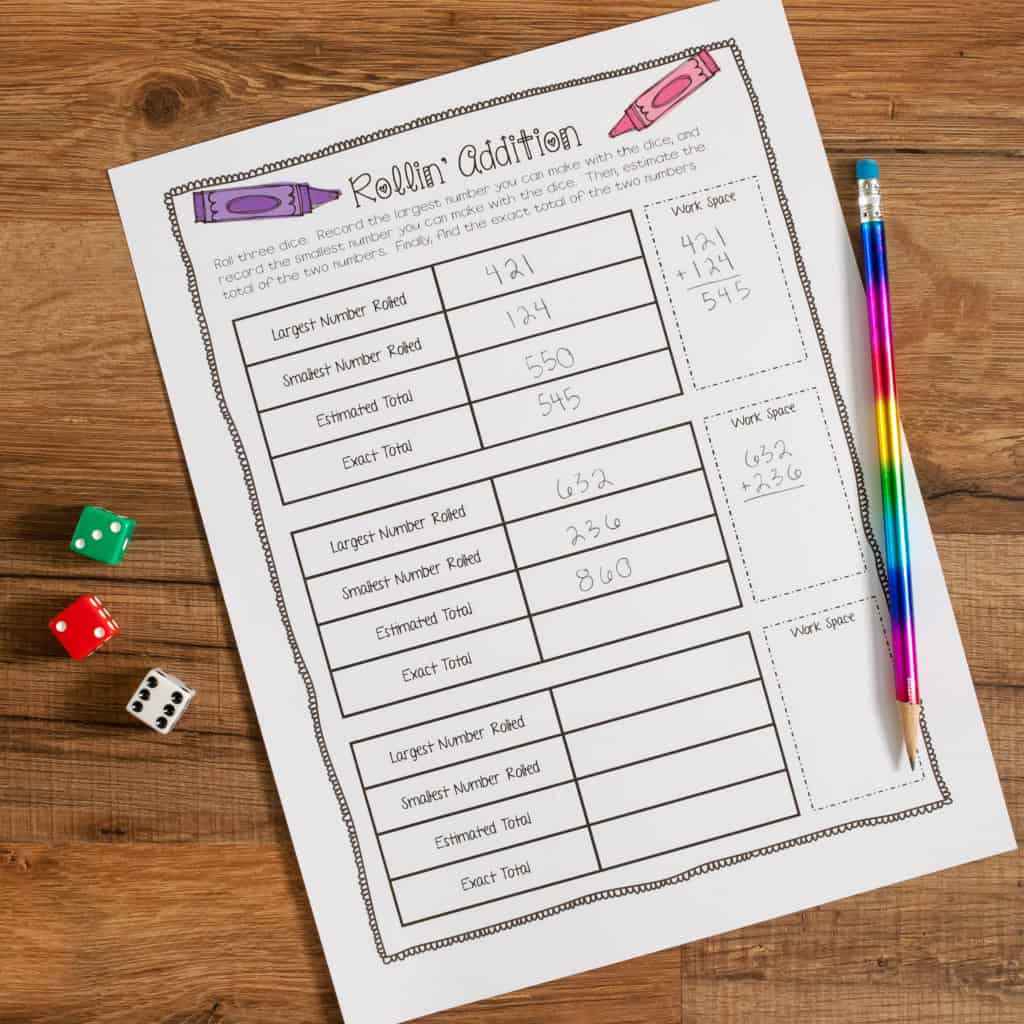
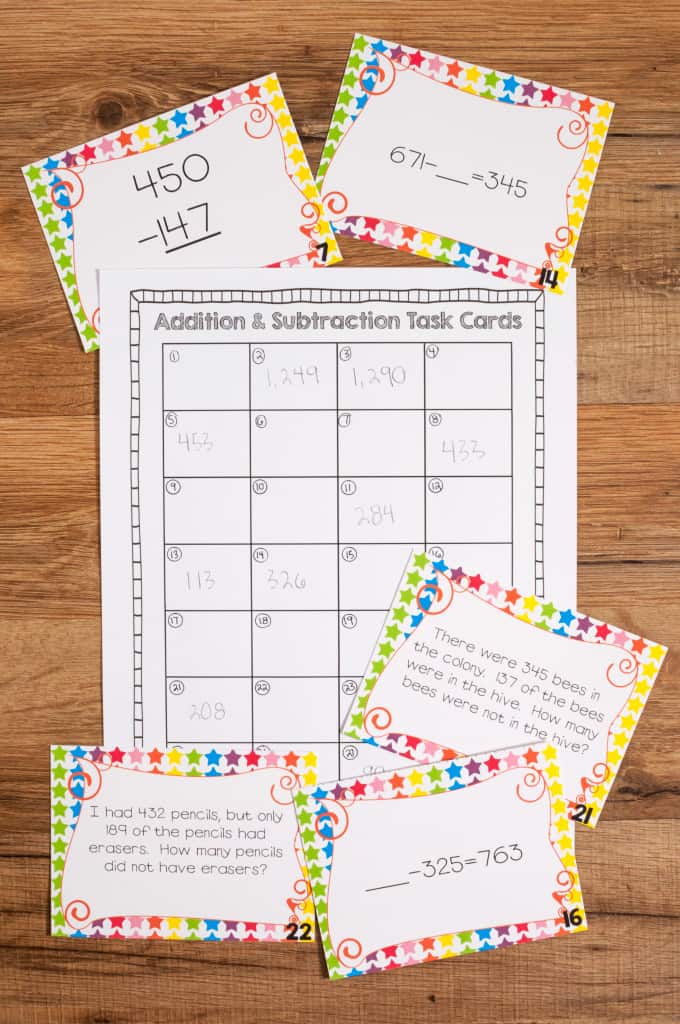
Adding and Subtracting With Regrouping Anchor Chart
I do like to have a collection of resources for my students around the classroom. I like to display an addition and subtraction anchor chart for the algorithm, as well as provide examples in students interactive notebooks. Rather than using a traditional math interactive notebook, I use My Math Reference Notes, because they save me SO MUCH time cutting, folding, and pasting.
